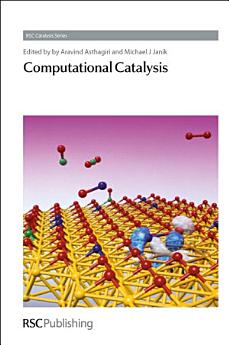Computational Catalysis
Aravind Asthagiri · Michael J Janik
Dec 2013 · Catalysis Series Book 14 · Royal Society of Chemistry
Ebook
350
Pages
reportRatings and reviews aren’t verified Learn More
About this ebook
The field of computational catalysis has existed in one form or another for at least 30 years. Its ultimate goal - the design of a novel catalyst entirely from the computer. While this goal has not been reached yet, the 21st Century has already seen key advances in capturing the myriad complex phenomena that are critical to catalyst behaviour under reaction conditions. This book presents an in depth review of select methods and approaches being adopted to push forward the boundaries of computational catalysis. Each method is supported with applied examples selected by the author, proving to be a more substantial resource than the existing literature. Both existing and possible future high-impact techniques are presented. An essential reference to anyone working in the field, the bookÆs editors share more than two decades of experience in computational catalysis and have brought together an impressive array of contributors. The book is written to ensure postgraduates and professionals will benefit from this one-stop resource on the cutting-edge of the field.
About the author
Aravind Asthagiri is Associate Professor at the Ohio State University. His research interests include the application of atmoistic simulations to examine and rationally design novel materals. Michael Janik is assistant Professor of Chemical Engineering at Penn State University. His current research employs computational methods to understand and design catalysts for alternative energy conversion systems.
Rate this ebook
Tell us what you think.
Reading information
Smartphones and tablets
Install the Google Play Books app for Android and iPad/iPhone. It syncs automatically with your account and allows you to read online or offline wherever you are.
Laptops and computers
You can listen to audiobooks purchased on Google Play using your computer's web browser.
eReaders and other devices
To read on e-ink devices like Kobo eReaders, you'll need to download a file and transfer it to your device. Follow the detailed Help Center instructions to transfer the files to supported eReaders.







